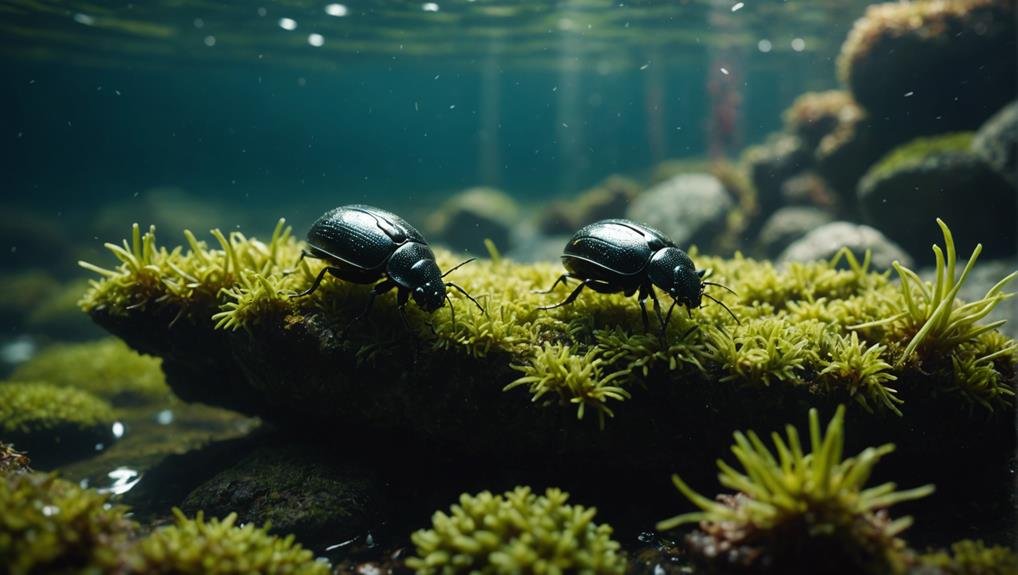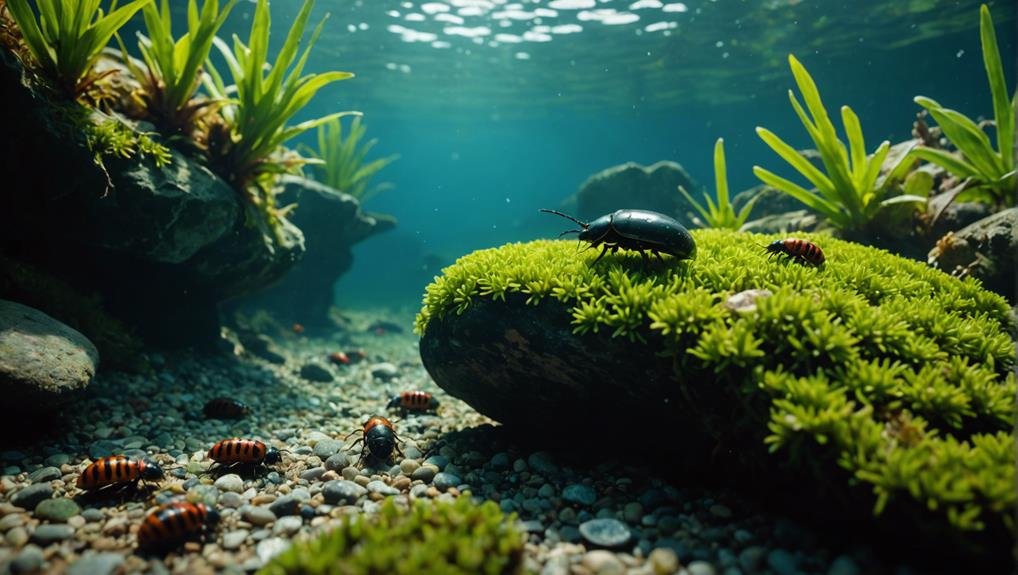Water penny beetles are fascinating creatures that play a crucial role in freshwater ecosystems. These small, round, copper-colored larvae, measuring between 3 to 10 mm, can be found in fresh flowing water where they feed on algae and detritus. By doing so, they help to control algal blooms and serve as indicators of water quality. Adult water penny beetles are dark and shiny, mainly active at night, and often seek shelter under rocks. Despite their intimidating appearance, they are harmless to humans and employ defense mechanisms when disturbed. These beetles undergo complete metamorphosis, with larvae able to survive the winter in colder regions. Understanding the significance of water penny beetles can offer valuable insights into maintaining the health of aquatic habitats.
Fascinating Facts
Water penny beetle larvae are small, round critters that serve as excellent indicators of freshwater quality. These larvae have fascinating adaptations that help them thrive in their watery homes. They use specialized suction-like structures to grip onto rocks, preventing them from being carried away by swift currents. This feature also enables them to feed on algae and detritus efficiently, playing a crucial role in keeping the water clean. The presence of water penny beetle larvae in freshwater ecosystems signals a healthy environment with good water quality. By munching on organic matter, they help manage algae growth, which can otherwise result in harmful algal blooms. Therefore, the survival and abundance of these larvae reflect the overall well-being of their aquatic habitats, making them vital players in maintaining a balanced ecosystem.
Appearance and Habitat
Water penny beetle larvae are small, round, and copper-colored, typically measuring between 3 to 10 mm in length. These larvae have a flat body with flexible plates on their abdominal segments, helping them cling to rocks underwater. They possess five pairs of feathered gills to extract oxygen efficiently from the water. Found in fresh flowing water bodies like rivers, streams, and occasionally in lakes with high wave activity, these larvae prefer underwater habitats. In contrast, adult water penny beetles are dark, shiny, oval-shaped insects, ranging from 4 to 6 mm. They can be seen near rocks and logs close to the edges of streams, often venturing into terrestrial areas rather than remaining submerged.
Behavior and Diet

Water penny beetle larvae are crucial for freshwater ecosystems as they feed on algae and detritus, helping to maintain clean water bodies. Their feeding process involves scraping algae off rocks using rasps on their legs. These tiny larvae are nocturnal, seeking shelter under rocks during the day to avoid predators and emerging at night to feed. Predator evasion is vital, as birds, fish, and small mammals prey on them. While the adult water penny beetle's diet is not fully understood, they likely consume minimal food during their short lifespan.
Interaction and Safety
Water penny beetles play a crucial role in indicating water quality and pose no threat to humans. Encounters with these beetles are rare, and they do not require any safety precautions as they are not harmful or venomous. When disturbed, the larvae, commonly found clinging to rocks, exhibit simple defense mechanisms by swimming away or suctioning tighter. Their flattened bodies help them escape predators like birds, fish, and small mammals. Adults, which are terrestrial and elusive, quickly walk or fly away when disturbed, minimizing human interaction. These beetles help maintain healthy aquatic ecosystems by controlling algae growth, showcasing their importance in the environment.
Life Cycle

The water penny beetle follows a complete metamorphosis life cycle, beginning with females laying eggs underwater or above the surface. The larvae, also known as water pennies, go through two growth stages, showcasing unique survival tactics. They have the ability to overwinter in colder regions, ensuring their impact on the environment remains steady throughout the year. While most larvae pupate in damp soil, some choose to do so in water, aligning with their reproductive cycle and seasonal variations. After a pupation period of 10-30 days, adults emerge briefly to reproduce and continue the cycle. Their short adult lifespan is dedicated to sustaining the beetle's role in preserving the health of freshwater ecosystems. These seasonal behaviors and survival strategies underscore the beetle's adaptability and ecological significance.
Conclusion
The Water Penny Beetle plays a crucial role in freshwater ecosystems. Its larvae, recognizable by their copper color and flat bodies, help preserve water quality by consuming algae and detritus. These beetles act as indicators of a healthy aquatic environment, reflecting the condition of their habitats. As adults, they transition to a terrestrial lifestyle while still contributing to the ecosystem. Understanding their life cycle and behavior provides valuable insights into biodiversity and water quality, making them essential to the ecosystem's balance.

